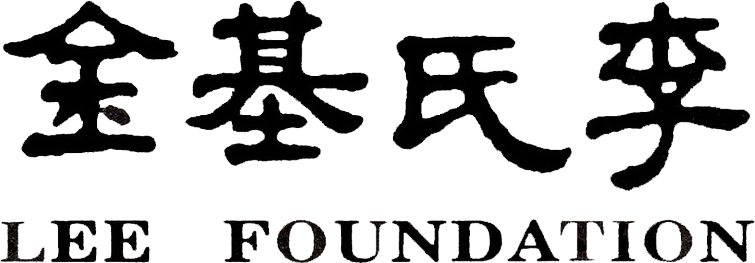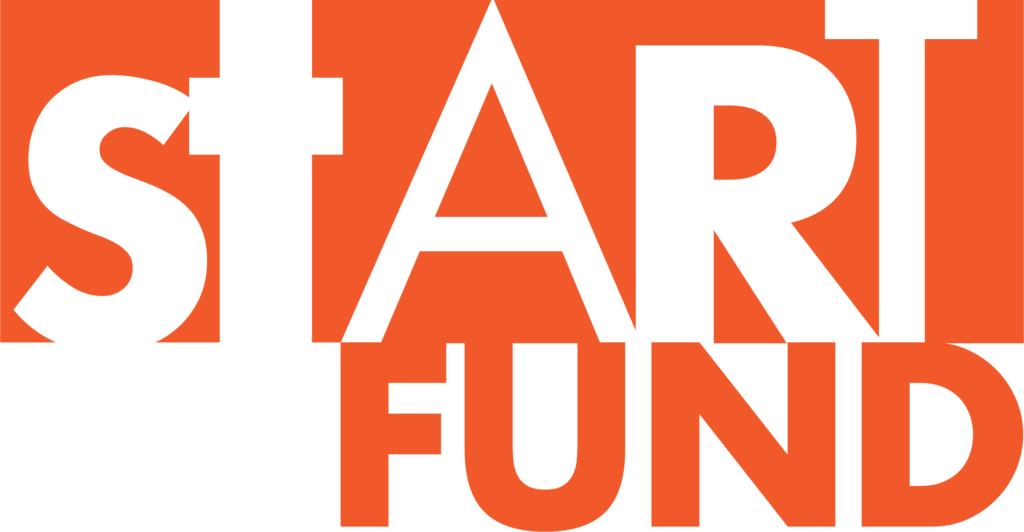Multi-Tasking with a Magic of her Own!
Donning various hats as the Admin Manager of Apsaras Arts, Dancer, Project Manager, Tour Manager, make-up artiste and also as a wardrobe assistant, Sankari Elavalahan gives us an account of her early days of association with Apsaras Arts and her return to work with her Alma Mater
Were you born and raised in Singapore? Do you remember how and when dance happened in your life?
Yes, I am a second generation Singaporean. My paternal grandparents are from Thanjavur and maternal grandparents are from Karaikal.
I was exposed to dance at a very young age. I spent most of my afternoons and weekends at my maternal grandmother’s home as my mother was working full-time and was a part-time bridal makeup artist over weekends. My Chitti, Barathi, who is more of an older sister to me, was learning Bharatanatyam and performing quite frequently at festivals and community centres. I would sit by my mother’s side and watch her dress Chitti for her performance. I was completely awestruck by the costumes, accessories, make-up and the attention she was getting. Once fully dressed, my mother would ask her to pose for photos and I was so fascinated by her flexibility and elegance. I remember having major meltdowns whenever she was leaving and pleaded to them to take me for her shows.
My cousin, Shanmugapriya who was also learning Bharatanatyam and touring internationally as part of Neila (Sathyalingam) Maami’s Little Angels, Singapore’s first multi-ethnic children’s dance troupe, was also a huge inspiration for a five-year-old me. I pestered my mother to send me for dance classes and within a few months of attending classes, I had volunteered to perform solo at my pre-school graduation for the then Deputy Prime Minister, current Prime Minister Lee Hsieng Loong. All my classmates cheered for me and it was truly a diva moment for me.
You were initiated into dance by none other than Neila Sathyalingam mami. What were your early experiences with her and how did she inculcate the love of dance in you?
I started learning formally at the age of five with Vani Akka aka Kamalavani Anbarasu who was a senior student of Neila Maami at the Kallang Community Centre. Vani Akka was an excellent dancer herself and as a teacher she was approachable, patient and motivating. She made learning dance enjoyable while focusing on achieving the desired outcomes with us.
My early encounters with Neila Maami was when she would take our classes on days when Vani Akka had to be away. I was so frightened by the tall, big-eyed, Neila Maami with a strong British accent, and her thattu kazhi, which she used to point at students and correct our postures.
As I entered teenage, like all teenagers, I started having a love-hate relationship with Bharatanatyam and was not attending classes regularly, which I regret deeply till this date. However, Neila Maami noticed that I had a natural flair for semi-classical, folk and filmy dance items and initiated me to join The People’s Association (PA) Indian Dance Troupe where she was the choreographer, just to keep me dancing.
I was a Star amongst The Galaxy as the theme for our float was The Milky Way as part of the 1999 Chingay Parade. Chingay Parades are huge fun with over 30 cultural contingents all over Singapore and Asia gathering annually for a lively display of Singapore’s multicultural heritage.
Instead of discouraging and correcting my Bharatanatyam style, Neila Maami recognised my energy and passion in dance and showed me a path that would continue to inspire my journey. Maami was a visionary and all she wanted was for her students to keep dancing and for the flame to stay alive and burning.
Talk to us a bit about your performance career in dance. Are you also trained in nattuvangam and music? If yes, tell us a bit about it.
I started at the age of 15, as the youngest troupe member in 2000 at the PA Indian Dance Group and was given training to various dance forms such as Chinese Dance, Malay Dance, Modern Dance, Flamenco, Bhangra, Thevarattam, Mayilattam and Kalaripayattu. We even had a trainer from the Chennai Raack Academy of Dance to train us in Bollywood HipHop. Although I was very much active at PA with a two days a week training routine, I continued my Bharatanatyam practice with Neila Maami at the Telok Ayer Performing Arts Centre (TAPAC) over weekends and performed regularly at the Navarathri festivals and community events.
I was also heavily involved in local TV dance competitions representing my tertiary institution in which we had emerged as runner-up and champions in my final year.
One evening after the PA rehearsal, in the car with Maami, as usual Maami was asking about our thoughts regarding a recent Arangetram we had attended. I innocently shared with her that if I was ready to do an Arangetram and that I would like to do an all film song margam instead of the usual so that it would be more relatable and be better enjoyed by my family and the audience that would attend. She listened quietly and said. “Mama will never agree to this!”. Sathyalingam Mama that way was quite a traditionalist.
In February 2008, during the Sivagami, post-show appreciation lunch and Maami’s birthday celebration, I went to Mama and Maami to get their blessings, when she turned around to Mama and said, “Listen, please bless this girl as she would like to get an all film song Arangetram.”
I was pleasantly surprised and elated. Firstly, it was news that I was ready for my Arangetram and secondly, the fact that she was actually proposing the all film song Arangetram idea to Mama.
Soon after that event, my Arangetram preparations began. My mother and I flew to Chennai and we were introduced to Radhika Shurajit M’am to choreograph two items, Om Namashivayaa from the famous Tamil film, Salangai Oli as my Padam and Thillana from the Tamil film, Thillana Mohanambal. I had a eleven musicians live orchestra to support the Arangetram and it was only much later that I discovered that it was Aravinth Anna, who had carefully curated the songs for me.
Since I had no formal training in nattuvangam and music, I initially struggled to understand the korvai patterns and memorised the calculations. Maami and my musicians were very patient and spent many hours helping me get through my Arangetram.
After the completion of my Arangetram, I was adamant that I would like to take up dance as a full-time career. However, at that point, Maami encouraged me to go out into the working world and see what it had to offer because she knew that it was not easy to survive as a full-time artiste. I was at that point also foraying into the next phase of my life – I was getting married and gearing up to start a family.
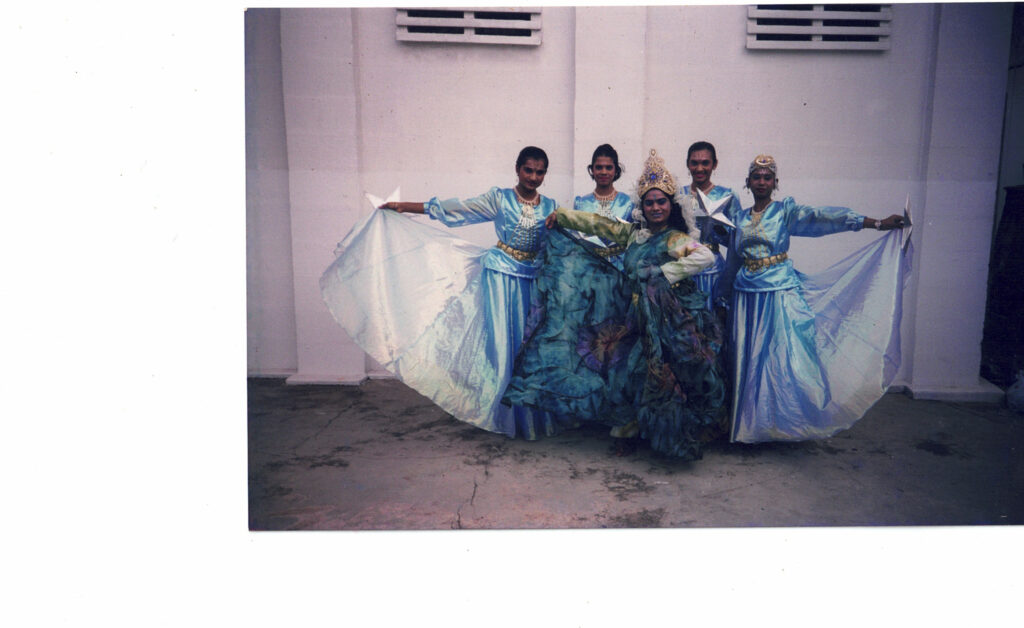
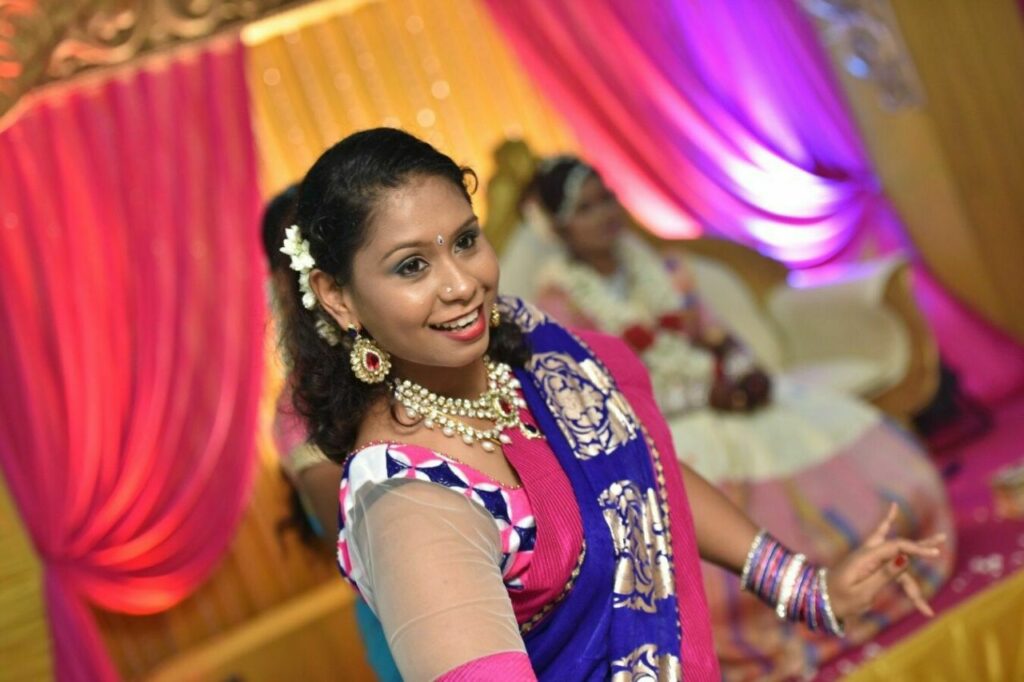
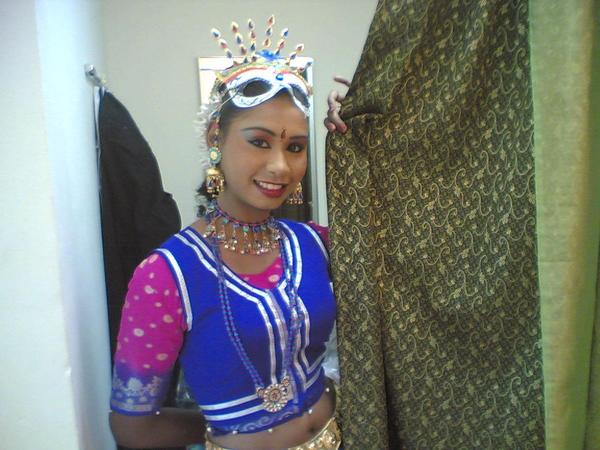
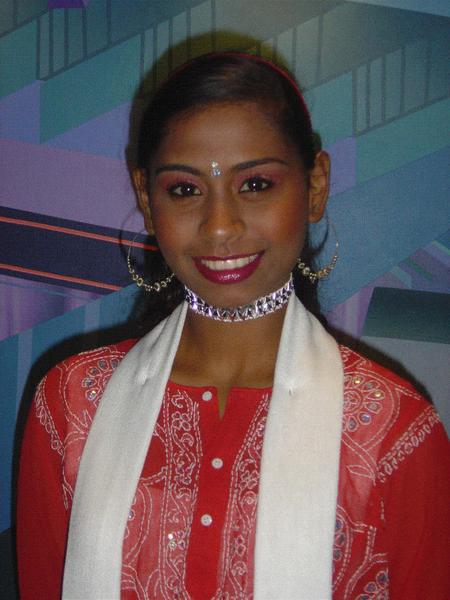
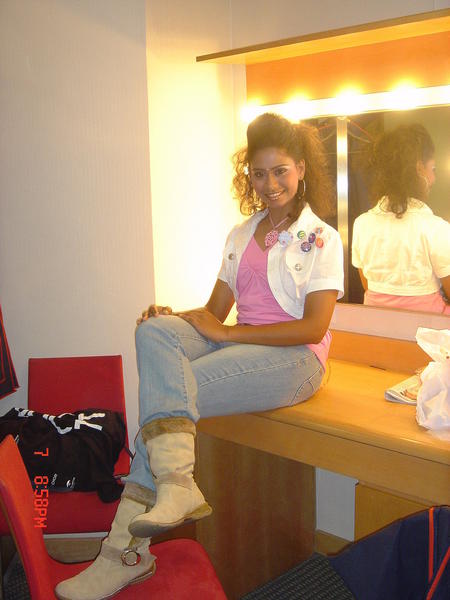
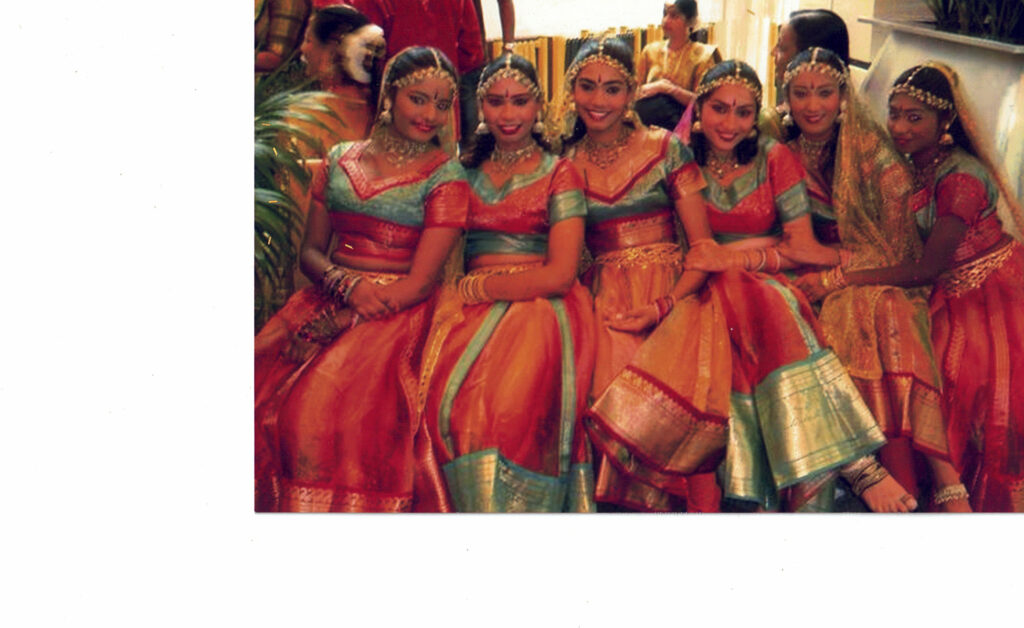
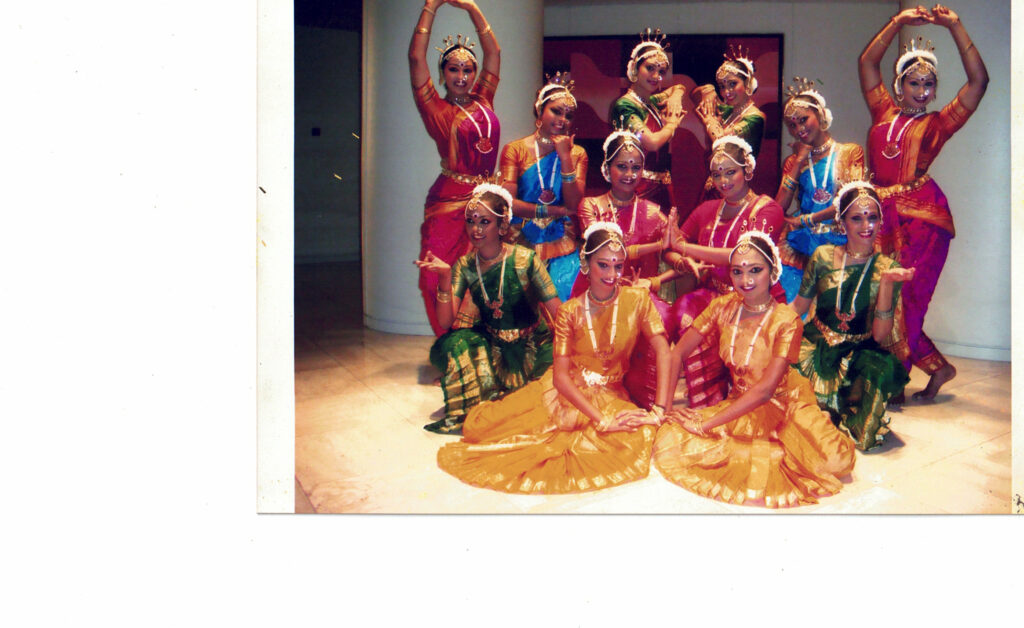
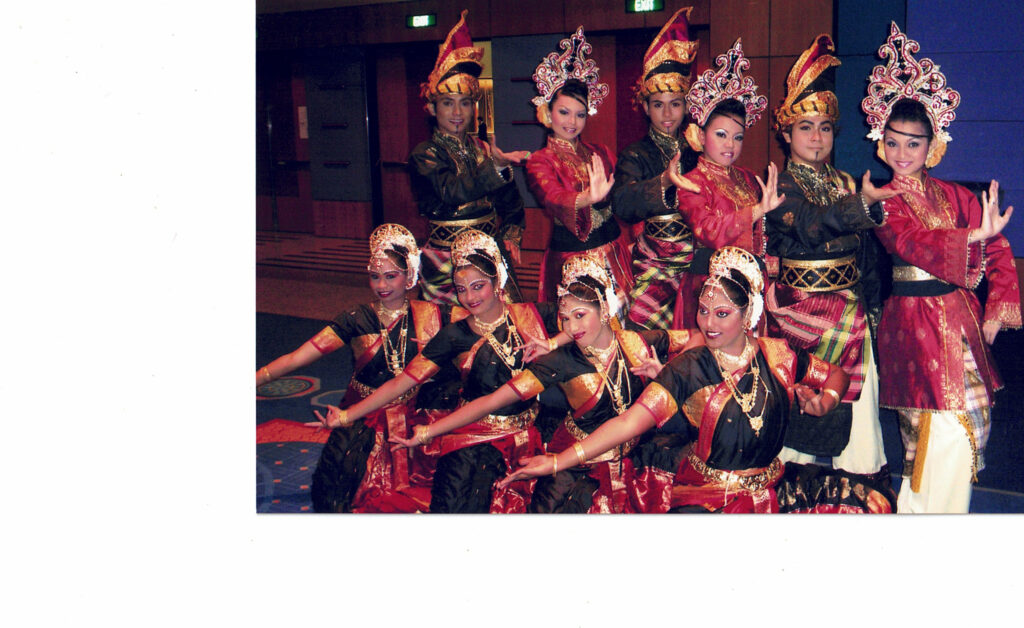
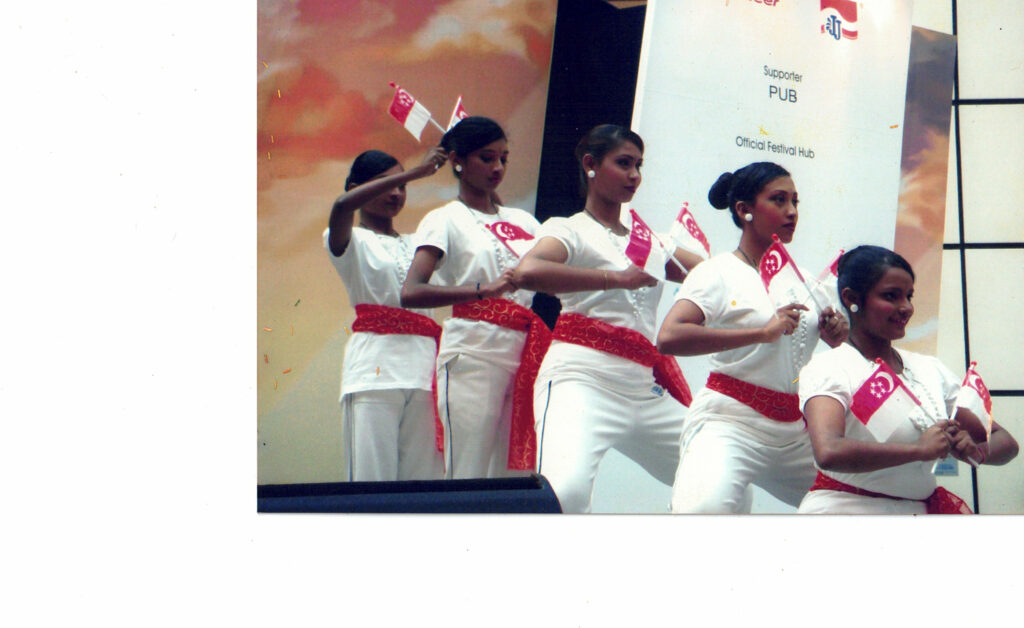
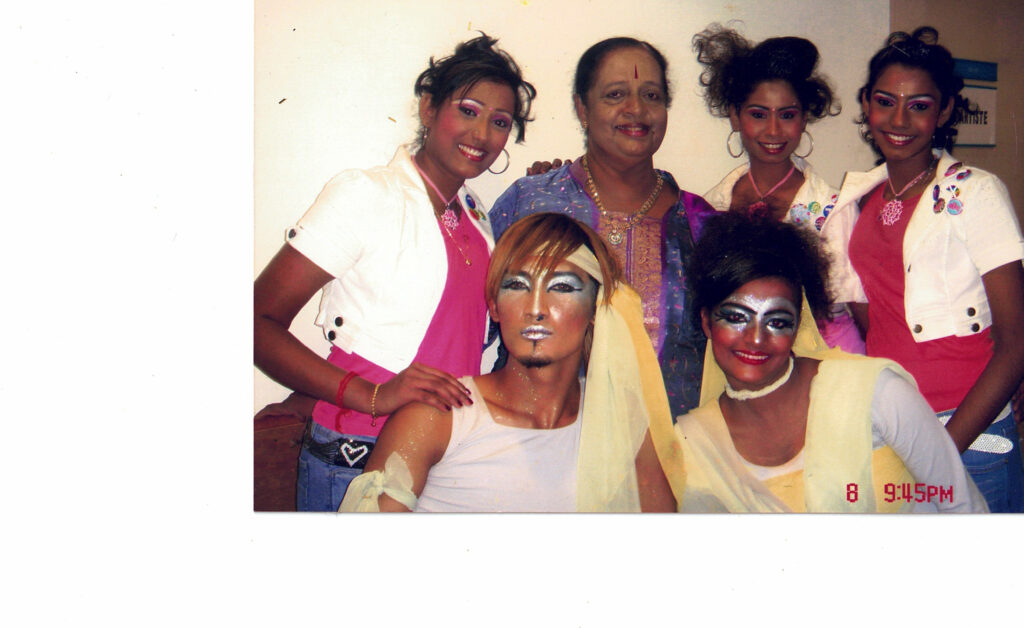
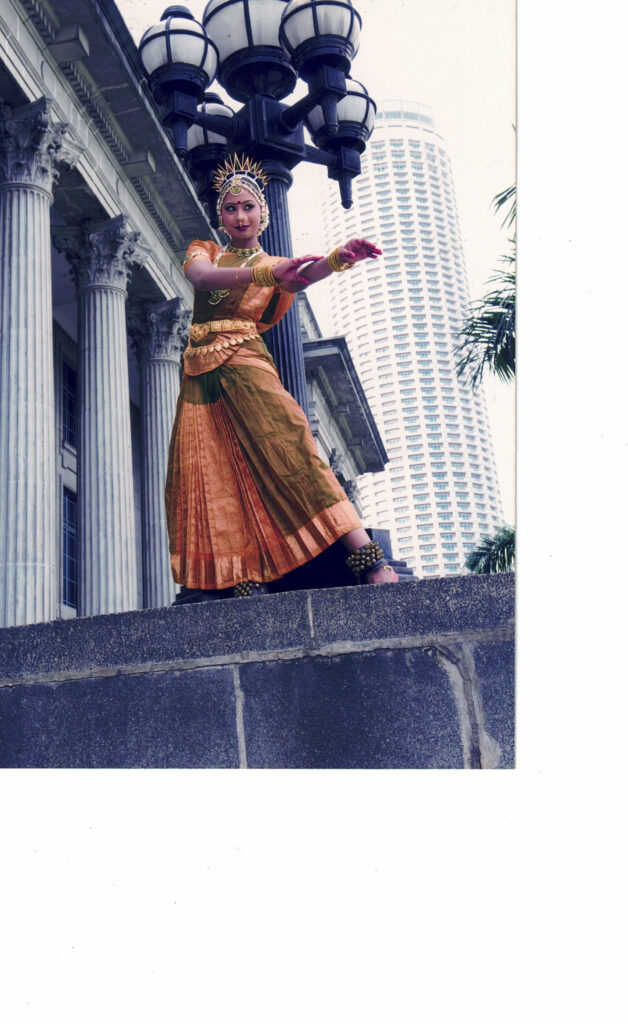
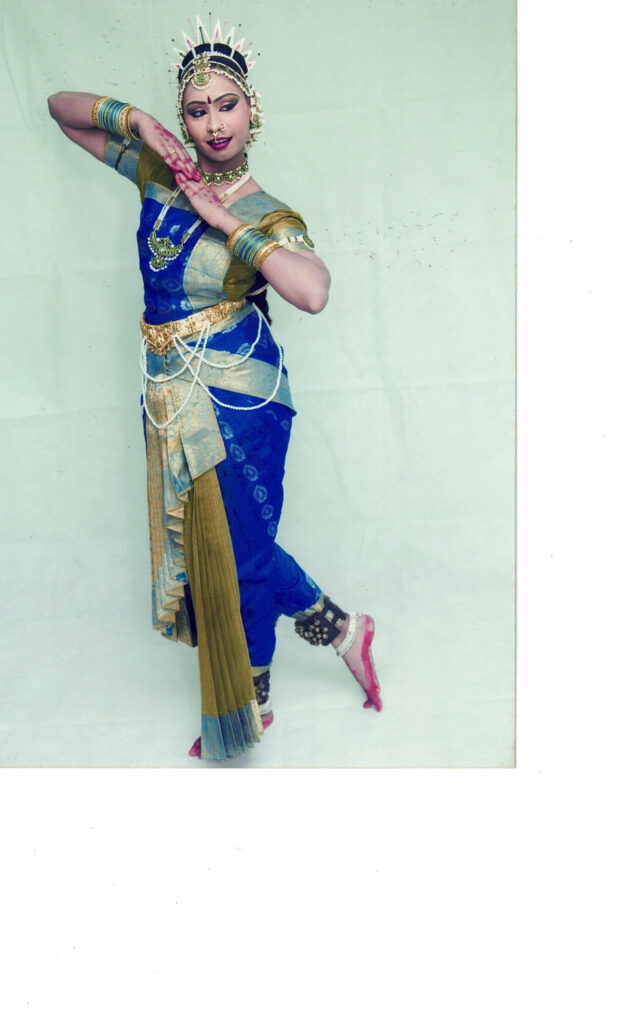
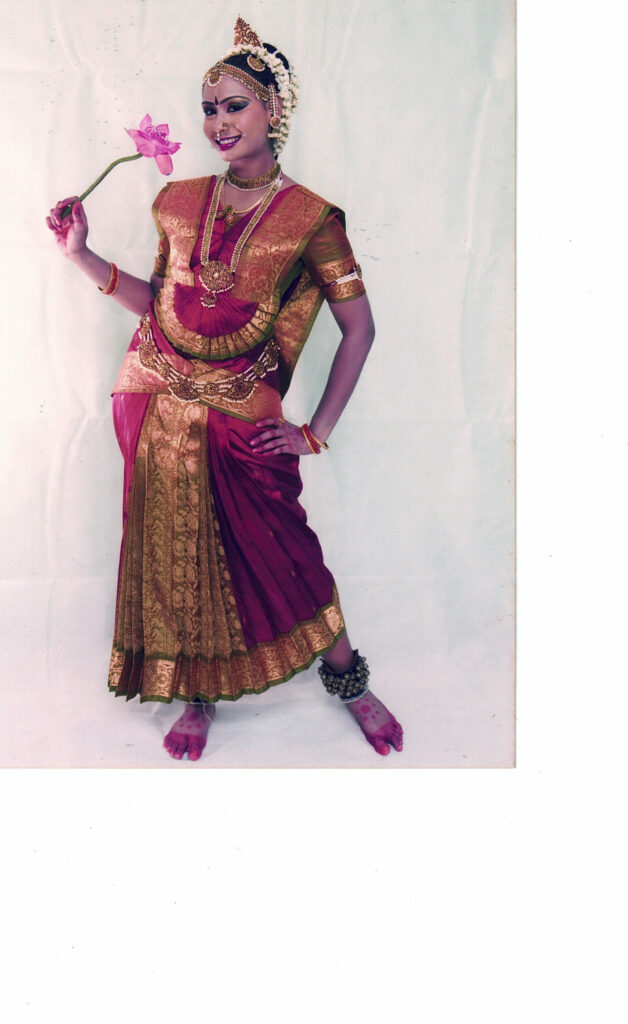
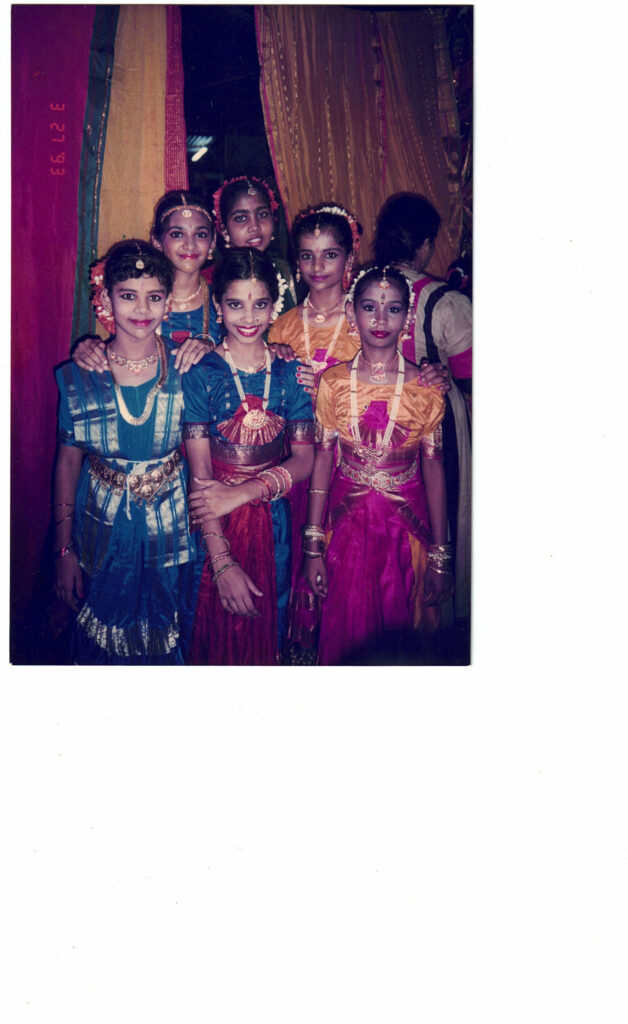
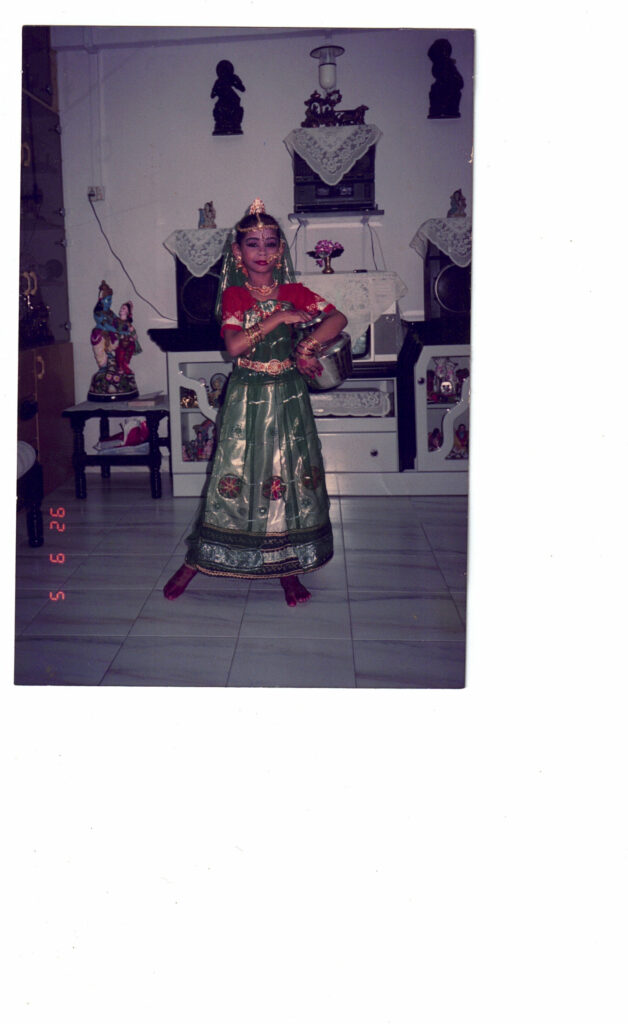
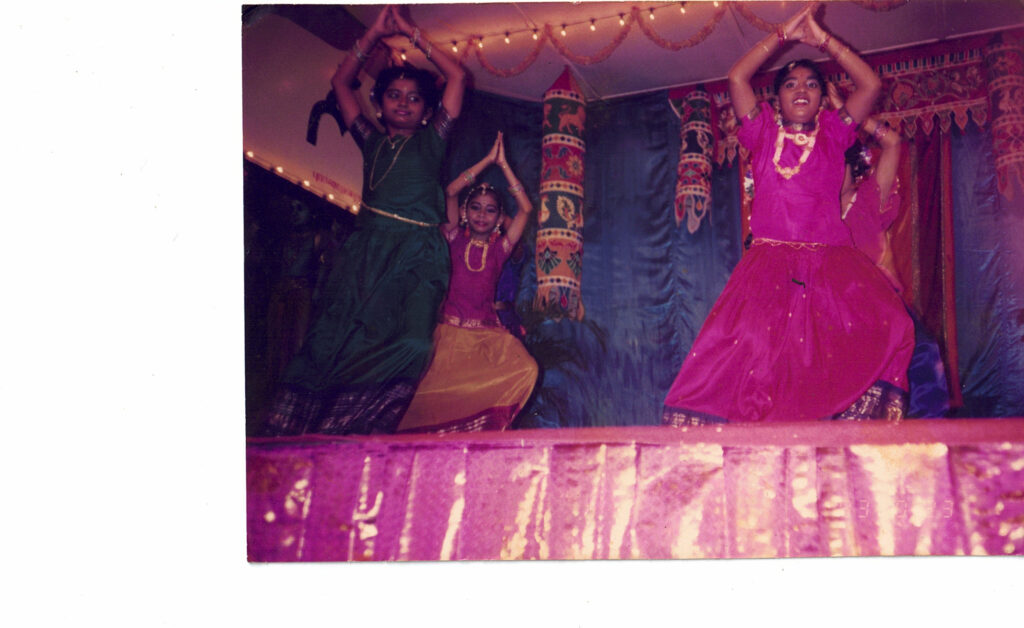
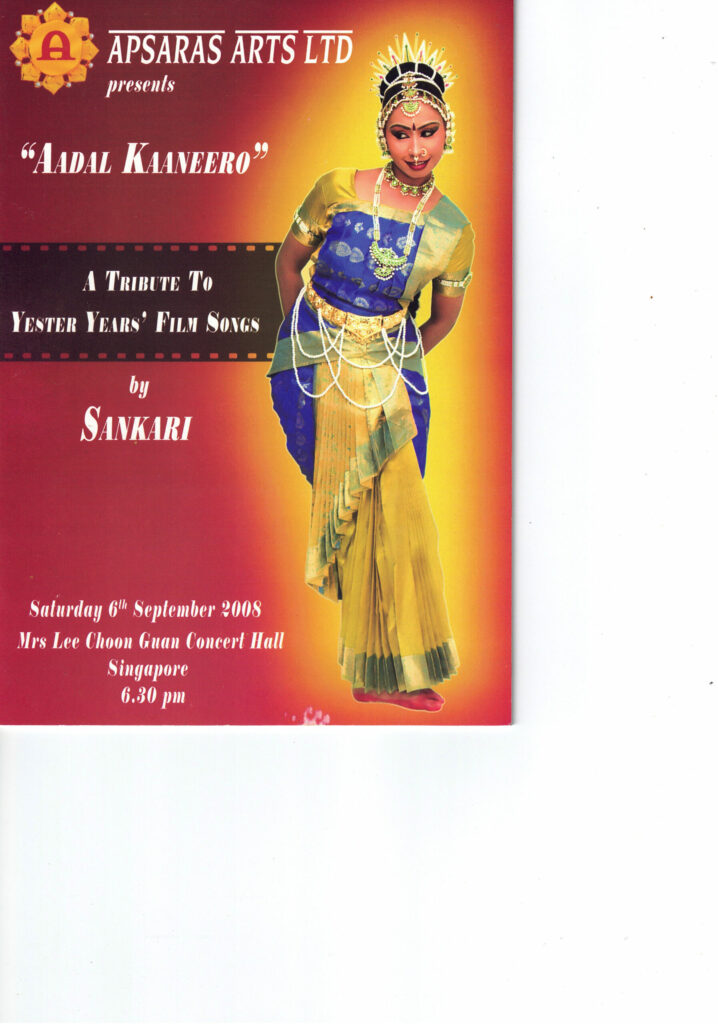
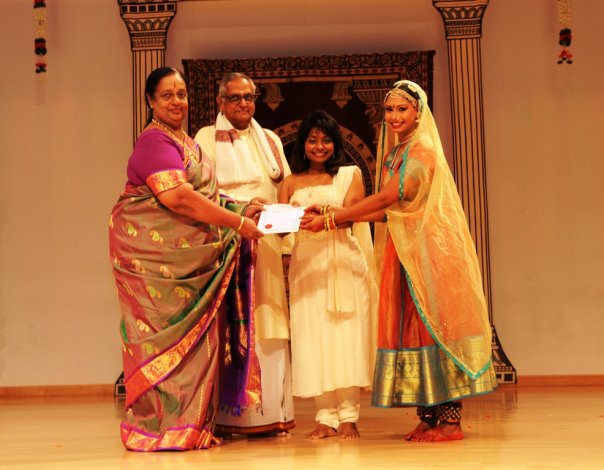
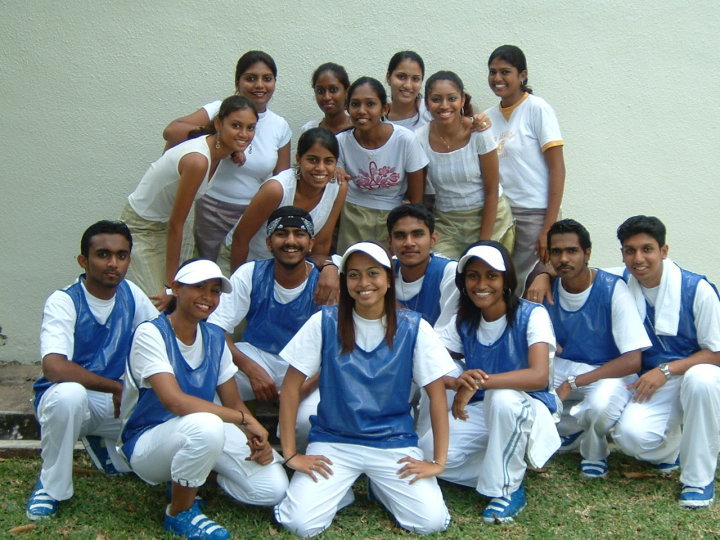
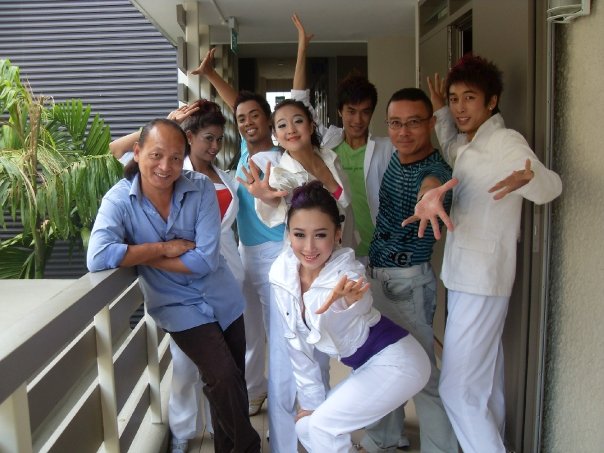
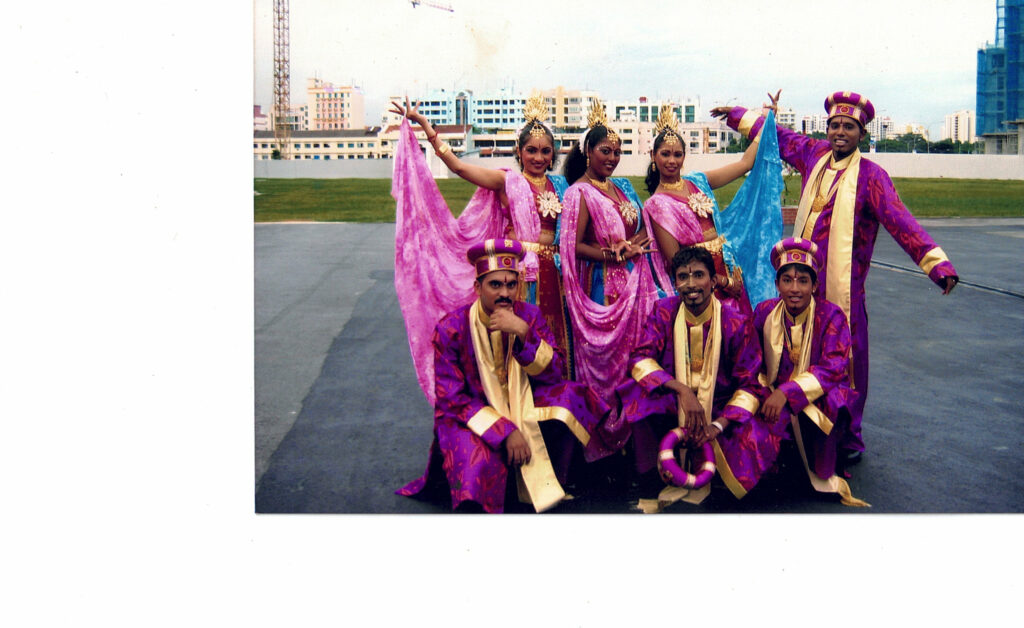
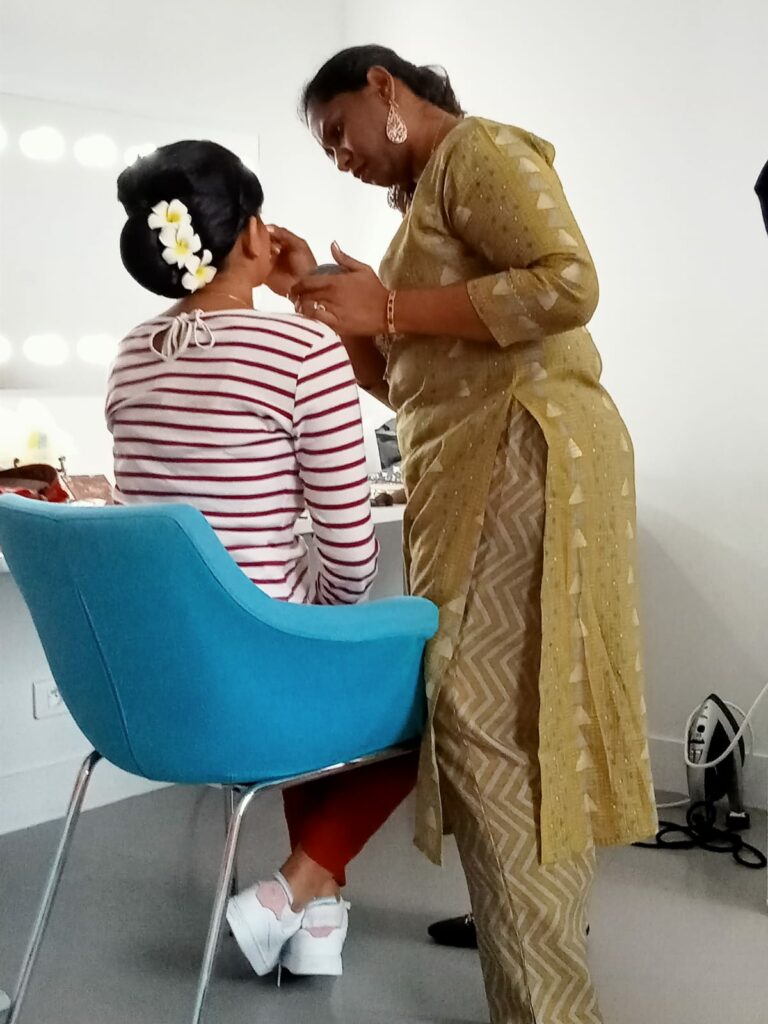
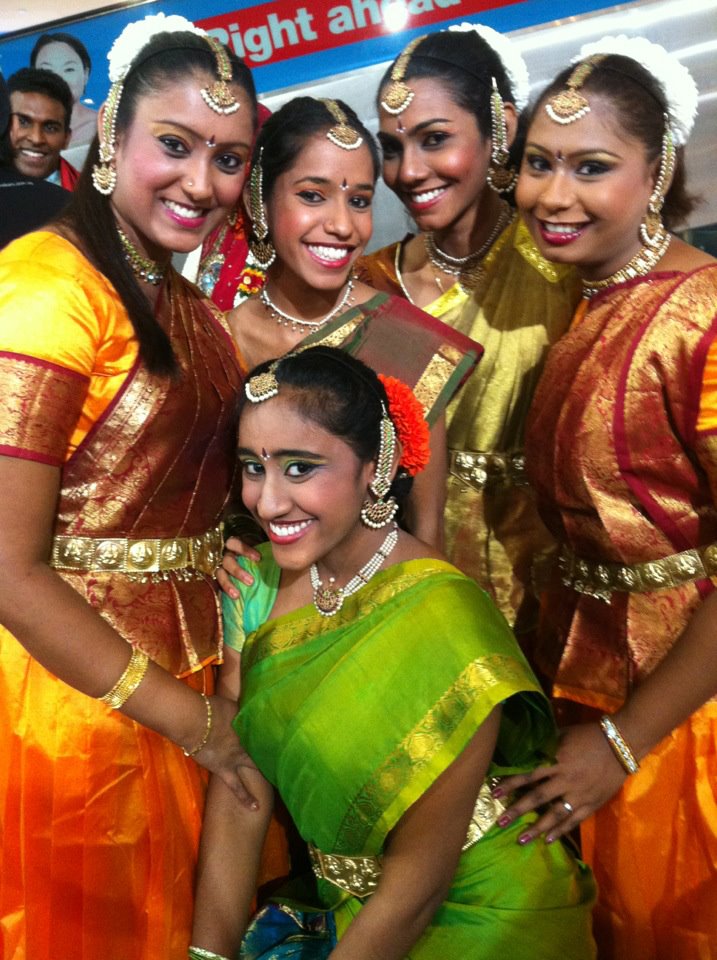
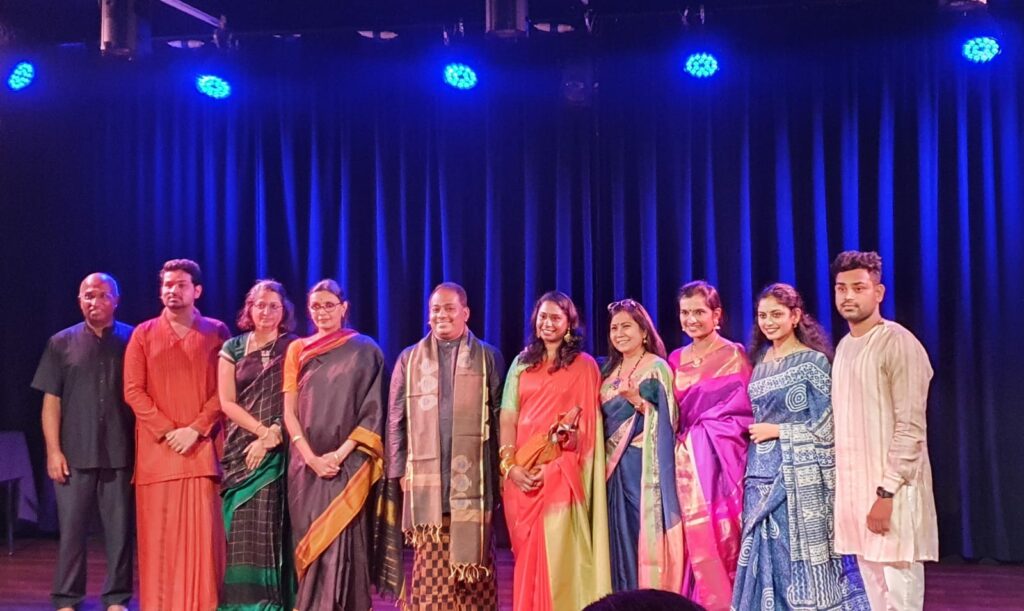
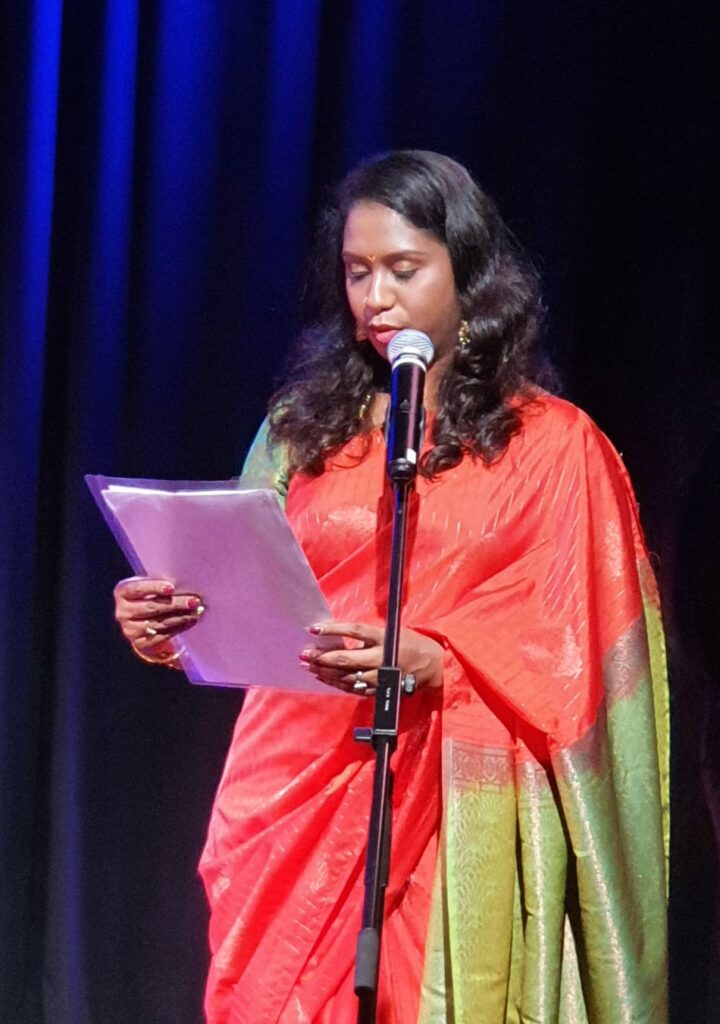
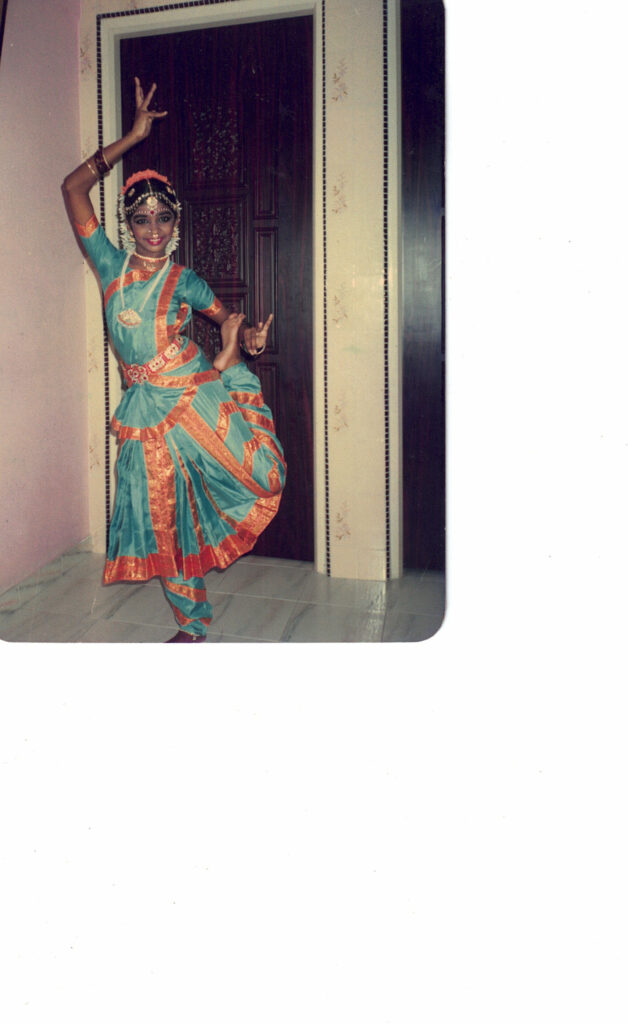
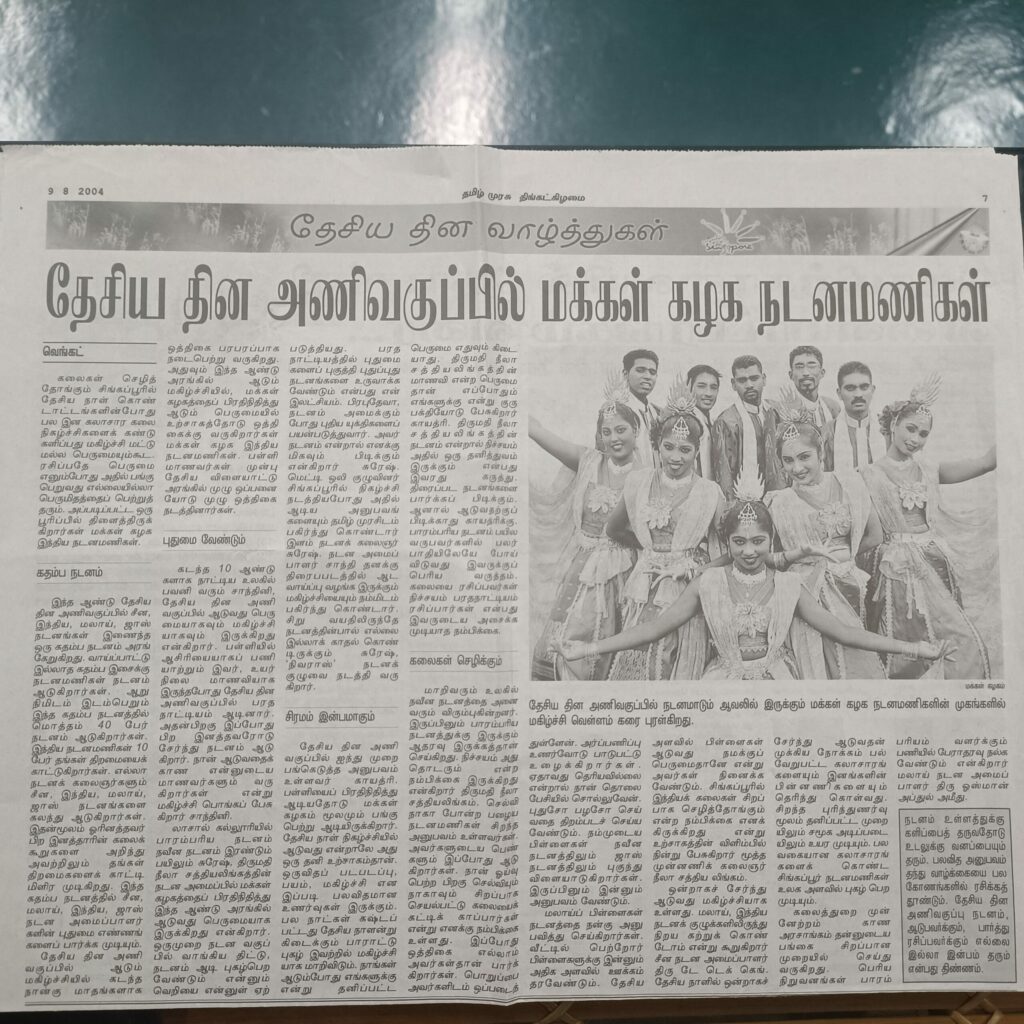
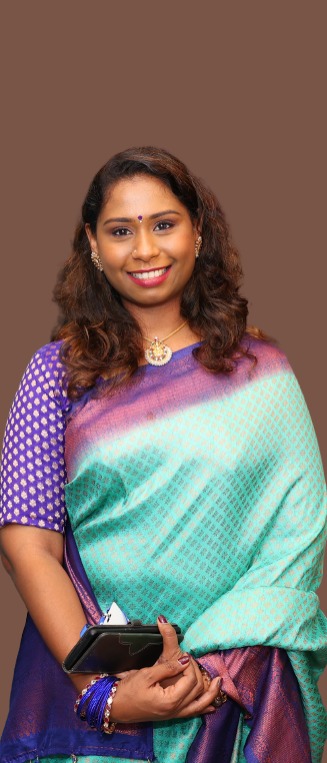
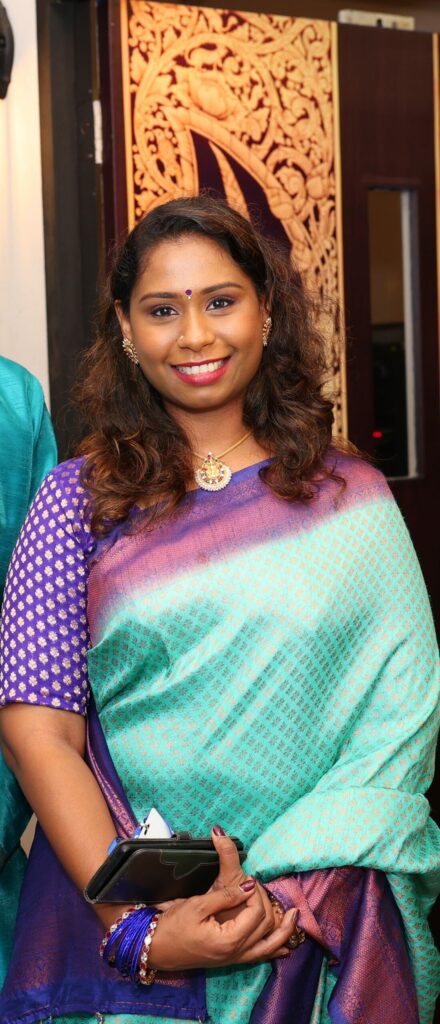
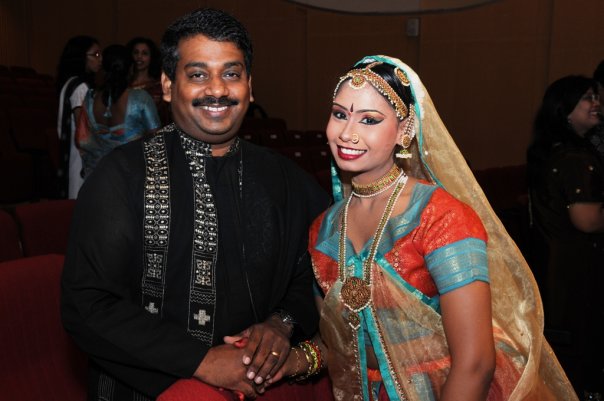
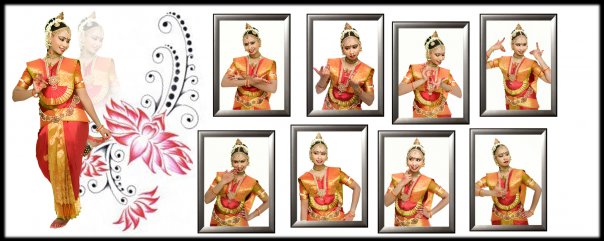
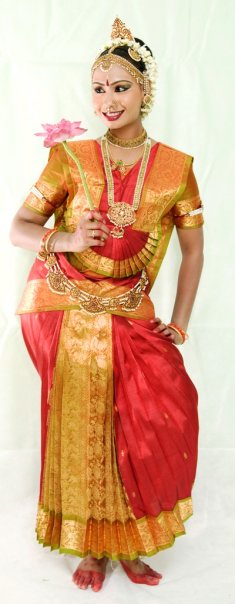
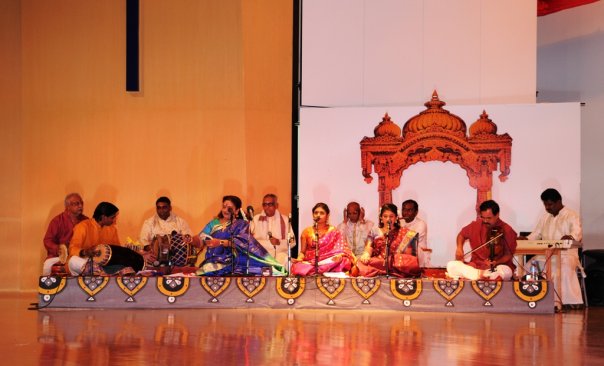
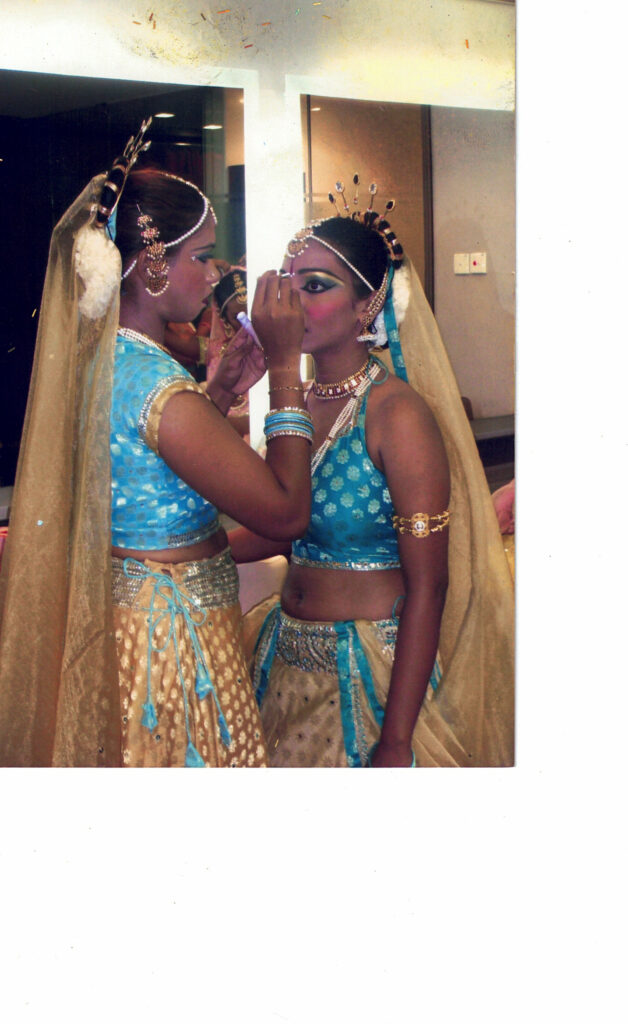

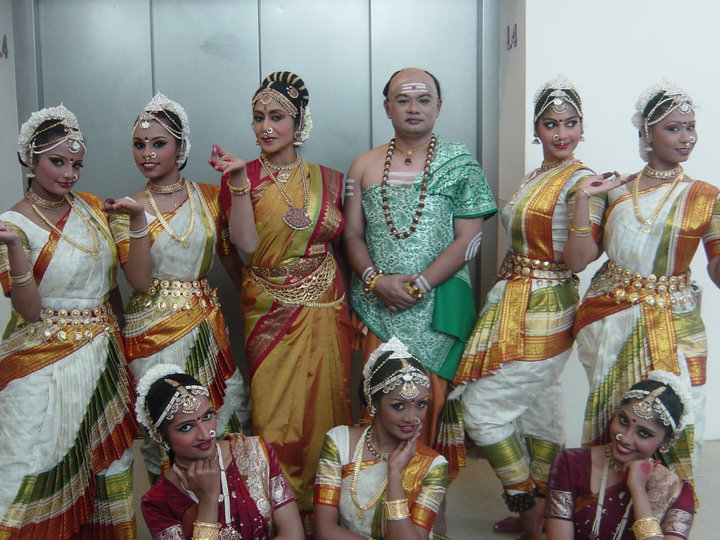
Over the years, you have seen the landscape of arts in Singapore evolve. How do you think it has changed and what has been Apsaras Arts contribution to it?
Personally, I feel that the 80s and the 90s were the golden era of culture and heritage in Singapore where art forms were much sought-after and consumed, not only for the sake of the arts but also with an intent to delve deeper into literature, language, cultural and even spiritual discoveries. The arts were taught holistically, with emphasis on character building, discipline and perseverance. Mainly the Singapore Tourism Board and several government organisations celebrated and promoted the arts and culture locally and internationally which helped the arts scene in Singapore to thrive organically and profitably.
However, the next generation of artistes and students were easily misled by mainstream media to jump on trends blindly and seek instant gratification to fame and payment when they had just learnt to grab on the ropes. In Singapore, the masses still lack the awareness of how extensive the art form is.
Just like my family, many families think that completing an Arangetram is the final goal to achieve. Like all professions, it takes years of intensive training, networking and scholarly research to produce quality content that will leave an unforgettable impact on the audience. The corporates and other organisations are still stuck on the mentality of remunerating artistes with exposure and honorariums when the costs of living have increased and forget that artistes have families to feed and bills to pay at the end of the day. Dancers spend hours on rehearsal, paying musicians and for music recordings, costume, jewellery and studio rentals but organisers take all these aspects for granted and always negotiate saying it’s only one item or seven minutes and only pay ridiculous amounts as performance fees.
The only consolation we get once in a while is when parents of students and artistes recognise and appreciate the efforts that we invest and volunteer to help without asking.
Apsaras Arts’s initiatives and productions are genuinely avant-garde, as both Neila Maami and Aravinth (Kumaraswamy) Anna never feared taking on the mammoth tasks including the costs towards research, bringing artistes together under one roof and the long hours of rehearsal to achieve impeccable productions. Their constant search for knowledge, talent and their undying passion to ensure the art form thrives is the fuel that keeps us going.
In the past twelve years of Dance India Asia Pacific (DIAP) metamorphosing to Indian Performing Arts Convention (IPAC), I have witnessed a very healthy and vibrant growth in the local industry as they are able to now access far-fetched resources with such ease that resulted in many successful collaborations and enriched the participants’ understanding of the industry functions.
Sankari, you now work with Apsaras Arts and are a key member of this organization. How does it feel, in a sense, giving back to your Alma Mater.
Apsaras Arts is more of a gurukulam than a workplace. As cliche it may sound, I do not consider my time or efforts here as work.After Neila Maami’s passing in 2017, I felt that it was a calling from Maami herself to finally be able to give back to her and the institution which has taught me life and all that I need to know about it. I can’t be more grateful to be under this banyan tree and to serve here; it has been my greatest blessing. I have learnt so much from just observing how everyone strives for perfection here, and how committed they are to take the organisation one step forward, everyday.
I started as a part-time receptionist and admin personnel; however with my background in Tourism Management and my work experience for ten years as a civil servant in public service, my experience in government procurement, budgeting, event management and project administration, I quickly jumped to help the relatively small team with both company and academy matters, such as grant applications, seeking sponsorships, sourcing for local gigs, negotiating with vendors and suppliers, venue bookings, student fee collections, coordinate travel arrangements, entertaining and hosting guests artistes, ticket sales, front of desk duties… the list goes on.
On an average, since 2017 to date we have had about fifty programmes per year, which means we are busy preparing one show to another almost every week. We have also grown from 50 students in 2017 to over 150 students till date.
As I am also a Cosmoprof-trained professional make-up artist, I used to help out occasionally with wardrobe and make-up for the academy performances. However, I was surprised and excited when Priyan (Mohanapriyan Thavarajah) asked me to be the make-up artist for our first digital production, Sita. It was a huge responsibility given that it was going to be filmed. With the blessings of Neila Maami, it turned out really beautiful and since then I have had the privilege of doing the make-up for company dancers, locally and internationally.
I am infinitely small in the grand scheme of work that goes on at Apsaras Arts. It is my honour and privilege to be part of Apsaras Arts which keeps Neila Maami’s legacy going.
What according to you is the future of arts in Singapore?
During the years of Covid, when the entire world was locked down and depressed, artistes remained busy. They cheered on medical professionals, patients in quarantine centres and entertained all those who were stuck at home during the lockdown.
We quickly adapted to new norms, technologies and continued creating content and seizing the opportunity to entertain and educate the masses. This only goes to show that not even a pandemic can stop one from being involved in the arts.
As arts and entertainment involve the creation, production and distribution of products and services that use creativity and human capital as primary inputs, it has lead to the creation many jobs. With many graduates from arts management courses, there is a fair demand and supply for higher skilled workers such as lights and audio technicians, graphic designers, content creators, programming and project management to support the industry while playing a crucial role towards the economic development of the country. There is an increase in full-time artistes and world-class infrastructure in place. This is a highly positive trend and in the long run, there is a great potential for Singaporeans to not only be a part of but also produce their own international Broadway productions.




